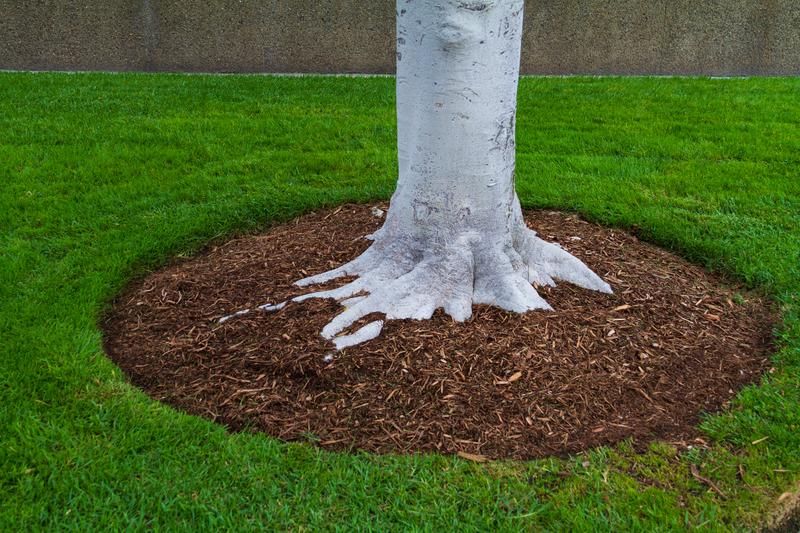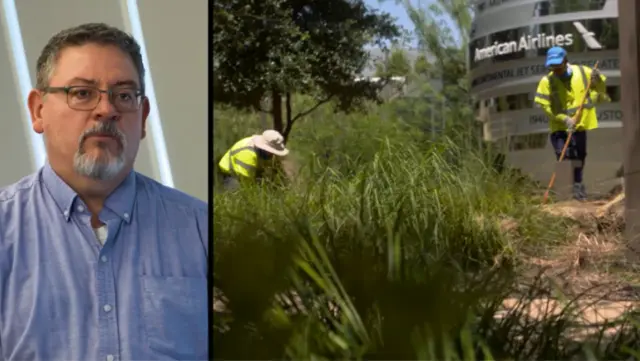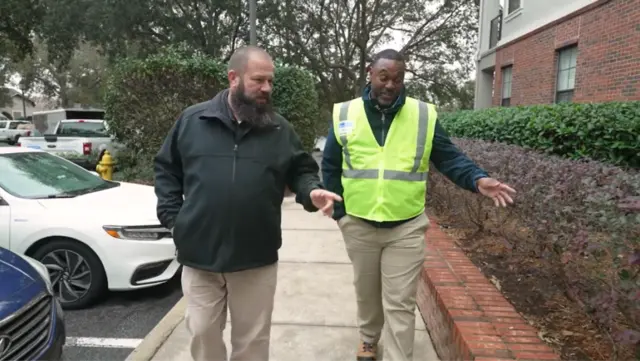
The Importance of Root Collar Excavation
Getting to the root of declining tree health
Trees provide many benefits to our environment and can be among your landscape’s greatest assets. Healthy trees can add as much as 20% to the value of your property. However, when a tree is under stress or in declining health, the problem may lie below ground and out of sight. Two issues that can cause declining health in trees include planting the trees too deep, and improperly applying mulch to the base of the tree. A root collar excavation can help diagnose the issue.
A Sturdy Foundation

When trees are planted too deep, the roots will struggle to access the required amount of oxygen for the tree to complete photosynthesis, a process essential to the health and survival of the tree. There are signs to look for if you suspect your tree was improperly planted. As you approach the base of the tree, you should see root flare as it enters the soil. The trunk of the tree should begin to flare out, extending its roots just below the top soil. Think of it like this: trees should not look like telephone poles entering the soil.
Avoid Excess Mulch
Properly installed and regularly maintained, mulch can add a “WOW” factor to your landscaping. Additionally, mulching is one of the most beneficial things you can do for your property. You are literally placing a protective barrier around your plants, trees and shrubs and over your bare soil.
However, adding too much mulch to the base, or building a mound of mulch around the base, can severely damage the health of the tree. If there is too much mulch around the base, the mulch works against the tree by restricting its access to oxygen. Excess moisture at the root collar makes the tree susceptible to insects, disease, and fungi.
Girdling Roots
When roots cannot get the oxygen they need because they are planted too deep, or there is an excess accumulation of mulch or soil above the root flare, the tree is susceptible to girdling roots. Rather than having the roots extend out and away from the tree, the roots begin to grow around or across the trunk of the tree, constricting and ultimately suffocating it. Movement of water may be restricted, and the tree will struggle to get sufficient nutrients. Left alone, the tree’s branches will grow at a slower rate, fewer leaves will be produced, and leaves will be smaller in size and lighter in color. Eventually the branches will begin to die back. Girdling roots can also occur when root growth is limited due to obstructions such as sidewalks and building foundations, or when there is compacted or poor soil conditions.
Addressing the Issue with Root Collar Excavation
A professional arborist may decide to conduct a root collar excavation to expose the base of the tree. This process will allow the professional to inspect the tree for signs of decay and check for girdling roots. Then, exposed roots that need to be addressed, such as any that show signs of girdling, can be pruned, teased apart, or repositioned. At this time, nutrients can be applied directly to the root system and the soil, which allows for faster absorption by the tree. Hard, compacted soils can be loosened, mulch properly applied if desired, and the base of the tree can be left with proper soil grading. This will ensure the tree’s roots are able to access water and oxygen properly.
Expertise from Root to Canopy
Need an Arborist consultation? Work with an experienced, safety-conscious local crew, certified arborists, and all the specialty equipment and techniques needed to keep your trees thriving.



